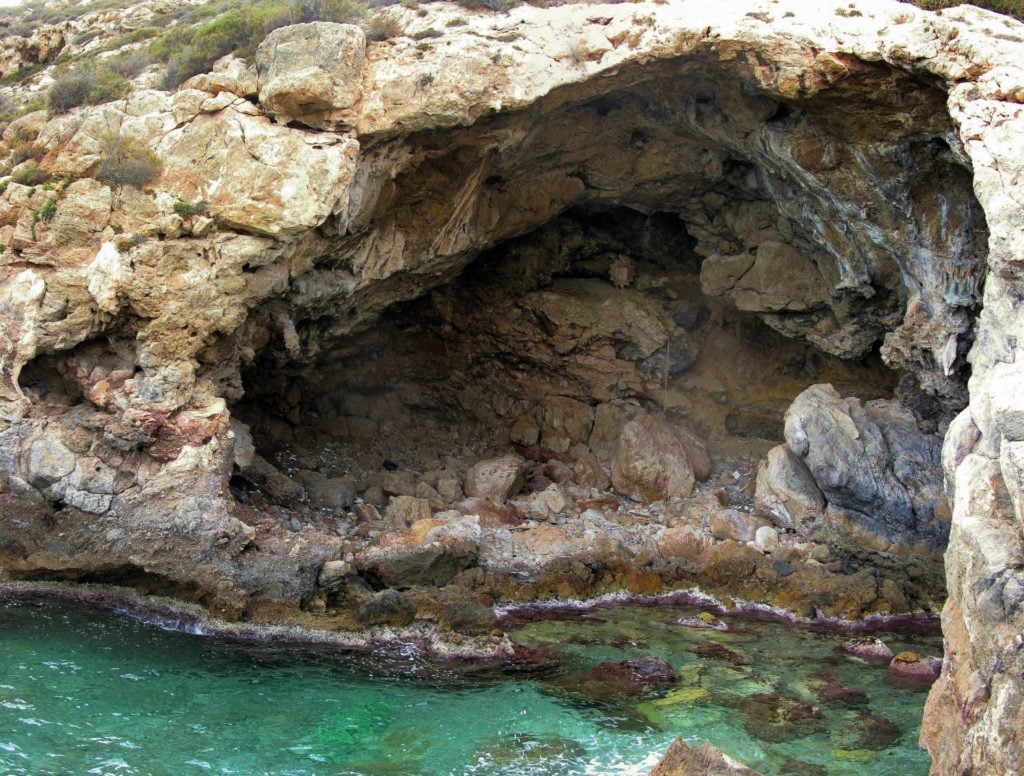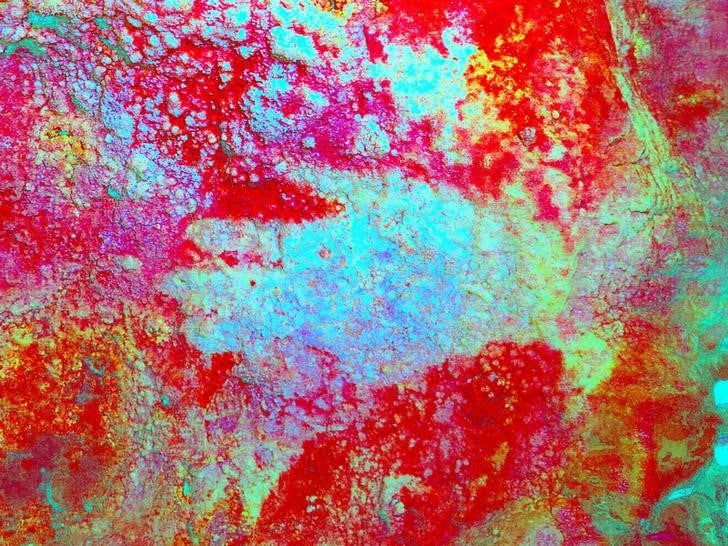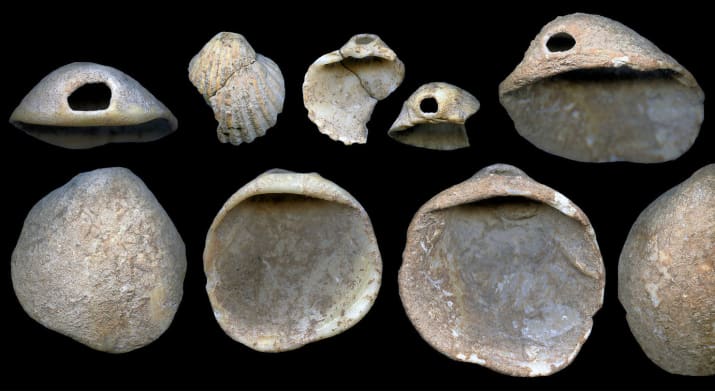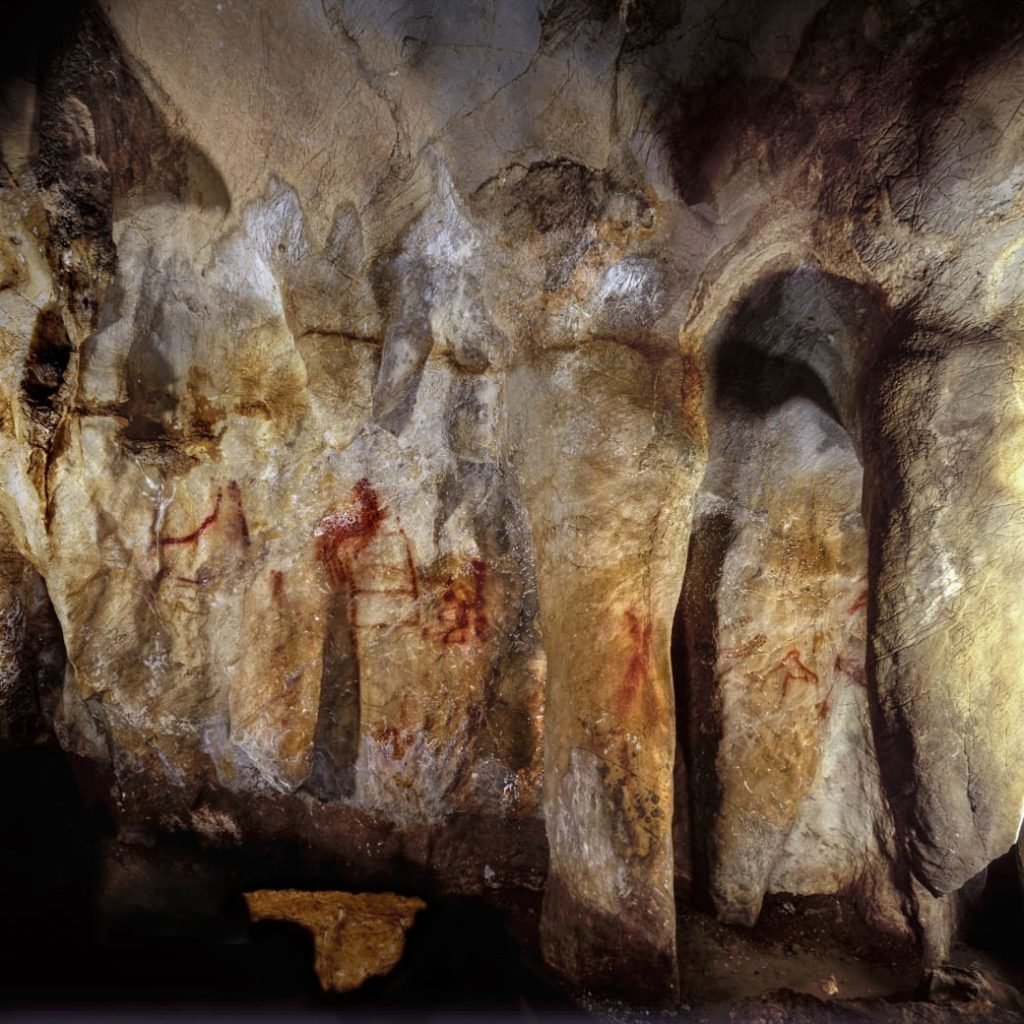Art World
Archaeologists Have Discovered the World’s Oldest Cave Paintings—And They’re by Neanderthals
Contrary to popular belief, the mental capacities of early humans and Neanderthals might have been "indistinguishable."

Contrary to popular belief, the mental capacities of early humans and Neanderthals might have been "indistinguishable."

Sarah Cascone

A new study of ancient cave paintings in Spain has identified the oldest known works of art. According to these new findings, the Neanderthals, long believed to be lacking the necessary intelligence for art-making, were in fact the first human species to create art.
The walls of the La Pasiega, Maltravieso, and Ardales caves feature a rudimentary hand stencil and a drawing of a ladder, as well as other markings. The prehistoric artworks have long been attributed to humans, but new, more reliable testing proves that the paintings are much older than previously thought. (The first-known Neanderthal artwork, a hashtag-like carving, was discovered in Gibraltar in 2014.)

A ladder-like drawing in Spain’s La Pasiega cave is thought to have been made 64,000 years ago by Neanderthals. Photo courtesy of C.D Standish, A.W.G. Pike, and D.L. Hoffmann/Max Planck Institute for Evolutionary Anthropology.
Rather than using carbon dating, the new studies, which were published this week in the journals Science and Science Advances, used radioisotopes of uranium and thorium. Rock and calcium carbonate formations atop the ochre markings indicate that the artwork is an astonishing 65,000 years old—made a good 15,000 years before the Indonesian hand stencils once thought to be the world’s oldest works of art.
“The only species that were around at that time were Neanderthals,” Alistair Pike, an archaeologist from the University of Southampton in England, and member of the research team, told NPR. “So, therefore, the paintings must’ve been made by them.”

A color-enhanced hand stencil from Spain’s Maltravieso cave, likely made by a Neanderthal. Photo courtesy of the University of Southampton.
The first humans didn’t make their way to Spain until some 20,000 years later, so they couldn’t possibly be responsible. The hand stencil, in particular, had to have been made intentionally, the artist making the pigment and spraying it over his hand. The caves also contain a cache of painted seashells that are an even more dumbfounding 115,000 years old. Some featured drilled holes, suggesting they were worn as jewelry.
Knowing that the Neanderthals made art upends the conventional view of Homo sapiens’s closest relative. Long believed to have been a more primitive, less intelligent species than modern humans, Neanderthals may have been more like our direct ancestors than previously imagined.

Perforated shells from Cueva de Los Aviones, possibly made by the Neanderthals as jewelry 115,000 years ago. Photo courtesy of J. Zilhao/University of Barcelona.
Like us, they independently began making art—which also suggests they may have even had a spoken language. In their findings, the research team noted that it now appears that “Neanderthals and early modern humans were cognitively indistinguishable.” This contradicts a recently published theory that our capacity for art gave us an advantage over the Neanderthals, who went extinct about 40,000 years ago, shortly after Homo sapiens arrived in Europe.
“I think we should accept them as part of us,” Pike said. “They are part of our lineage, they are human, they’re just a different human population.”

Paintings in Spain’s La Pasiega cave, thought to have been made 64,000 years ago by Neanderthals. Photo courtesy of C.D Standish, A.W.G. Pike, and D.L. Hoffmann/Max Planck Institute for Evolutionary Anthropology.
The findings are compelling, but not everyone trusts the new dating technology. “Unfortunately, I’m not fully convinced,” early human archaeologist Joseba Ríos Garaizar, of Spain’s National Research Center on Human Evolution, told BuzzFeed News.
Wil Roebroeks, a Neanderthal expert at Leiden University in the Netherlands, wasn’t involved in the project, but nevertheless told the Washington Post that the discovery “constitutes a major breakthrough in the field of human evolution studies.”
“What we’ve got here,” Pike told Reuters, “is a smoking gun that really overturns the notion that Neanderthals were knuckle-dragging cavemen.”